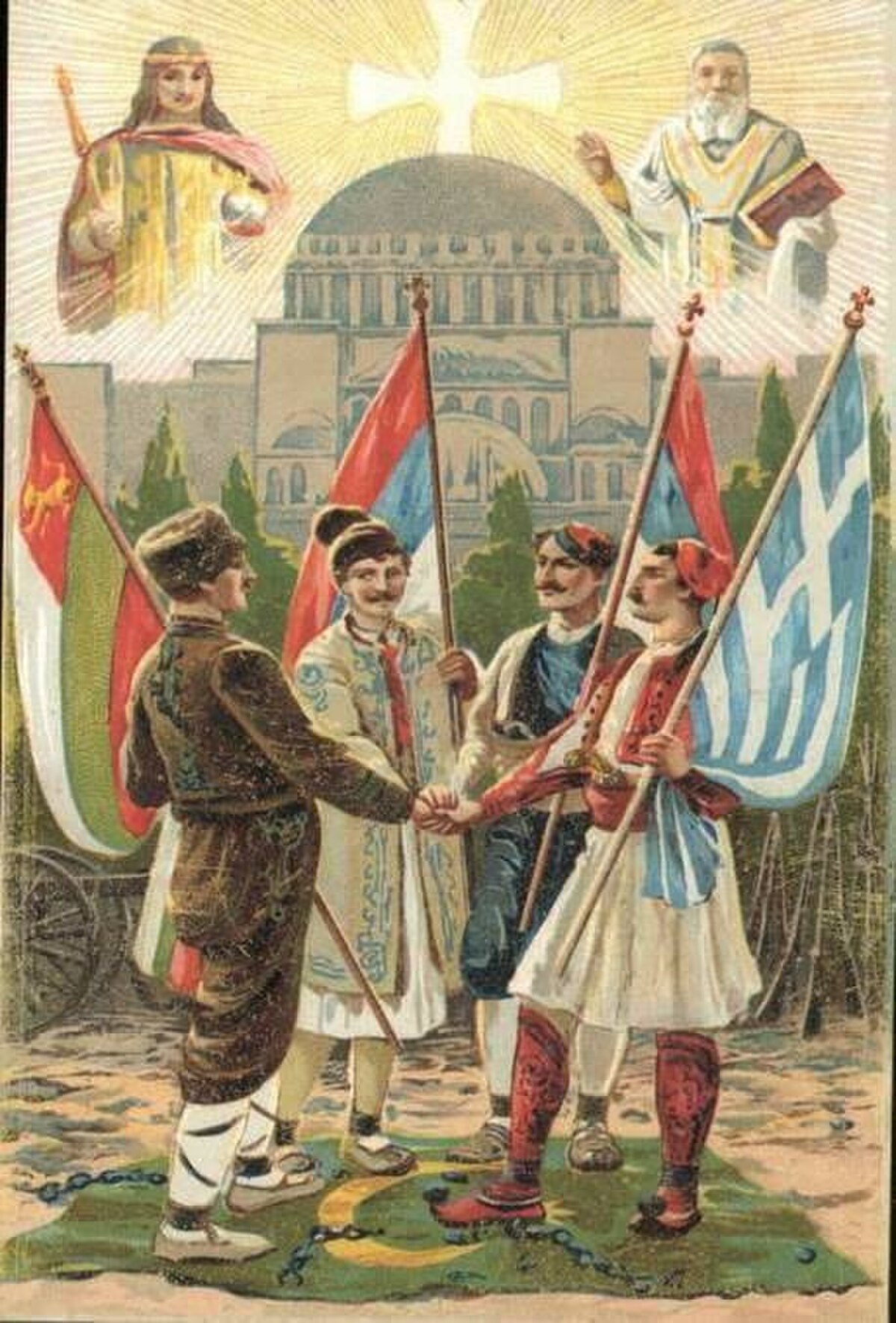
Balkan League
BalkansAt that time, the Balkan states had been able to maintain armies that were both numerous, in relation to each country's population, and eager to act, being inspired by the idea that they would free enslaved parts of their homeland. The Bulgarian Army was the leading army of the coalition. It was a well-trained and fully equipped army, capable of facing the Imperial Army. It was suggested that the bulk of the Bulgarian Army would be in the Thracian front, as it was expected that the front near the Ottoman Capital would be the most crucial one. The Serbian Army would act on the Macedonian front, while the Greek Army was thought powerless and was not taken under serious consideration. Greece was needed in the Balkan League for its navy and its capability to dominate the Aegean Sea, cutting off the Ottoman Armies from reinforcements.
On 13/26 of September 1912, the Ottoman mobilization in Thrace forced Serbia and Bulgaria to act and order their own mobilization. On 17/30 of September Greece also ordered mobilization. On 25 of September/8 of October, Montenegro declared war on the Ottoman Empire, after negotiations failed regarding the border status. On 30 of September/13 of October, the ambassadors of Serbia, Bulgaria, and Greece delivered the common ultimatum to the Ottoman government, which was immediately rejected. The Empire withdrew its ambassadors from Sofia, Belgrade, and Athens, while the Bulgarian, Serbian and Greek diplomats left the Ottoman capital delivering the war declaration on 4/17 of October 1912.
